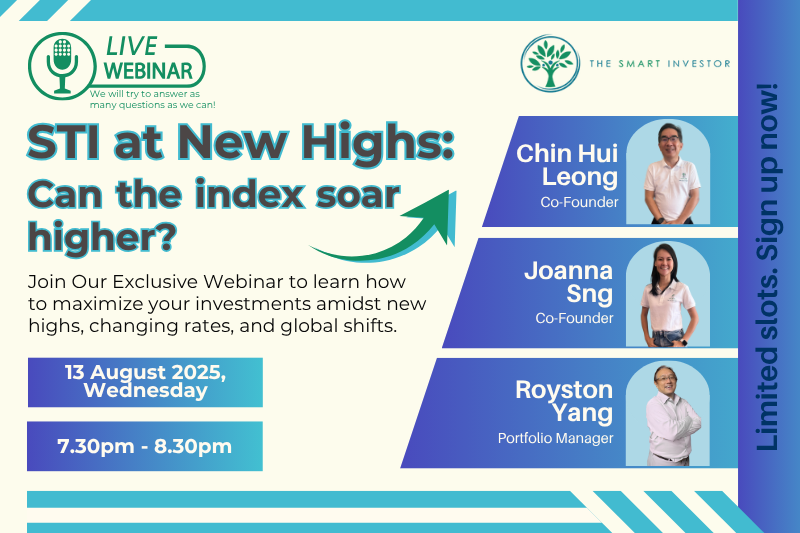The earnings season is in full swing, and the REIT sector is reporting its latest earnings and business updates for the previous quarter ending 31 March 2025.
Investors will be keeping their eyes peeled on how REITs are coping with a higher interest rate environment, along with Trump’s tariff headwinds.
Both Mapletree Industrial Trust (SGX: ME8U) [MIT] and Mapletree Logistics Trust (SGX: M44U) [MLT] recently announced their full fiscal 2025 (FY2025) earnings ending 31 March 2025.
The two blue-chip industrial REITs have a strong sponsor in Mapletree Investments Pte Ltd and investors may be curious to know which is the more attractive REIT to consider investing in.
We compare each REIT based on a series of financial and operating metrics to determine which is the better buy.
Portfolio composition
First, we look at each REIT’s portfolio and compare its size and level of diversification.
MLT and MIT both have more than 100 properties within their portfolio, but MLT’s properties are spread out across more countries, such as Hong Kong, Malaysia, Vietnam, and South Korea.
In contrast, MIT’s portfolio is spread across just three countries – Singapore, Japan, and the US.
MLT also has larger assets under management (AUM) of S$13.3 billion versus MIT’s S$9.1 billion.
Being a larger REIT gives it scale to pursue bigger acquisitions that can help to grow the REIT’s asset base.
Winner: MLT
Financials and DPU
Next, we look at each REIT’s financial performance for FY2025.
MIT managed to grow both its gross revenue and net property income (NPI) because of revenue contributions from the completion of the second and third phases of the fitting-out works for its Osaka data centre.
Rental contributions also flowed in from its newly acquired freehold mixed-use facility in Tokyo.
MLT, on the other hand, saw lower revenue contributions from China, coupled with the absence of contributions from divested properties.
The weakness of regional currencies against the Singapore Dollar was another headwind for MLT, causing both gross revenue and NPI to post year-on-year declines.
Distribution per unit (DPU) for MIT managed to rise 1% year on year to S$0.1357 as finance costs dipped by 1.4% year on year for FY2025.
MLT’s finance costs shot up 7.5% year on year to S$156.9 million, causing DPU to tumble 10.6% year on year to S$0.08053.
Winner: MIT
Debt metrics
We now turn to each REIT’s debt metrics to see how each is coping with the elevated interest rate environment.
MIT and MLT both share around the same level of gearing at 40 %+, but MIT has a higher interest coverage ratio of 4.3 times.
During periods of high interest rates, it’s useful for a REIT to maintain a good interest cover to assure unitholders that it can service its interest expense, so this is a plus point for MIT.
MLT, though, has a lower weighted average cost of debt at 2.7% versus MIT’s 3%, and also has a slightly larger proportion of its debt on fixed rates.
However, MIT still wins out in this case as it managed to reduce its cost of debt from 3.1% in FY2024 to FY2025. MLT’s cost of debt has stayed constant at 2.7% for both fiscal years.
Winner: MIT
Operating metrics
We now move on to each REIT’s operating metrics.
MLT has an edge over MIT with a higher occupancy rate of 96.2% versus 91.6%.
However, MIT enjoys a longer weighted average lease expiry (WALE) of 4.4 years versus just 2.8 years for MLT.
MIT’s rent reversion rate of 8.1% is also much higher than MLT’s 5.1%. MLT saw its rental reversion dragged down by China, which reported negative rental reversion of 9.4% for the quarter,
Winner: MIT
Distribution yield
Finally, we come to the most important metric for income investors – each REIT’s distribution yield.
From the table above, it’s clear that MLT has a higher yield of 7.2% versus MIT.
Winner: MLT
Get Smart: Capital recycling and acquisitions
Overall, MIT wins on more attributes compared with MLT.
MIT reported resilient DPU performance and also had more favourable debt and operating metrics.
Although MLT’s distribution yield was higher than MIT’s, this can be explained by the fall in DPU, which gives MLT a higher trailing distribution yield.
Investors, though, need to look beyond these headline numbers.
MLT continues to face headwinds in China, which could impact its DPU for FY2026.
The logistics REIT is, however, engaging in active capital recycling to rejuvenate its portfolio.
MLT conducted three yield-accretive acquisitions and divested 14 properties in FY2025.
MIT has successfully purchased two properties in Japan and these are contributing steadily to rental income.
However, the manager did warn of higher uncertainty in the face of tariffs and a potential trade war.
Elevated borrowing costs may also weigh on distributions for FY2026.
Attention: Investors aiming for both growth and peace of mind. We’ve pinpointed 5 SGX stocks known for consistent dividends. If you want to build a retirement portfolio, but don’t want the stress of stock watching, this report is for you. Click HERE to download now.
Follow us on Facebook and Telegram for the latest investing news and analyses!
Disclosure: Royston Yang owns shares of Mapletree Industrial Trust.






